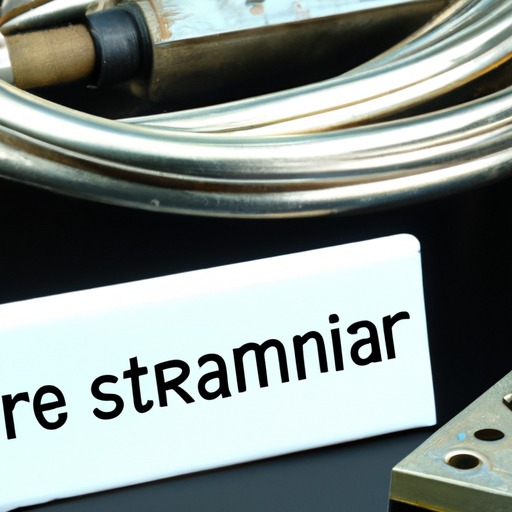Bridge rectifiers are essential components in electronic circuits, converting alternating current (AC) to direct current (DC) by rectifying the input voltage. They are widely used in power supplies, battery chargers, and other electronic devices. The production process of bridge rectifiers involves several steps to ensure high quality and reliability.

1. Material selection: The first step in the production process is the selection of high-quality materials. The main components of a bridge rectifier include diodes, resistors, capacitors, and a printed circuit board (PCB). Diodes are the most critical component, as they are responsible for rectifying the AC input voltage. High-quality diodes with low forward voltage drop and high current rating are essential for efficient rectification.
2. PCB design: The next step is the design of the PCB layout for the bridge rectifier. The PCB layout must be carefully designed to ensure proper placement of components and minimize signal interference. The layout should also consider factors such as heat dissipation, component spacing, and trace routing to optimize the performance of the bridge rectifier.
3. Component assembly: Once the PCB layout is finalized, the next step is the assembly of components onto the PCB. This involves soldering diodes, resistors, capacitors, and other components onto the PCB according to the design specifications. Automated assembly machines are often used to ensure precise placement of components and solder joints.
4. Testing and quality control: After component assembly, the bridge rectifier undergoes rigorous testing to ensure proper functionality and reliability. Various tests are conducted, including voltage testing, current testing, temperature testing, and load testing. Any defective units are identified and repaired or discarded to maintain high-quality standards.
5. Encapsulation: Once the bridge rectifier has passed all quality tests, it is encapsulated to protect the components from environmental factors such as moisture, dust, and mechanical stress. Encapsulation materials such as epoxy resin or silicone gel are used to provide insulation and mechanical protection to the bridge rectifier.
6. Packaging and labeling: The final step in the production process is the packaging and labeling of the bridge rectifier. The rectifiers are packaged in trays, tubes, or reels for transportation and storage. Each unit is labeled with essential information such as part number, batch number, and manufacturing date for traceability.
Overall, the production process of bridge rectifiers involves careful material selection, PCB design, component assembly, testing, encapsulation, and packaging. Each step is crucial to ensure the quality, reliability, and performance of the bridge rectifier. Manufacturers follow strict quality control measures to meet industry standards and customer requirements. By following a systematic production process, bridge rectifier manufacturers can produce high-quality products that meet the demands of various electronic applications.
Bridge rectifiers are essential components in electronic circuits, converting alternating current (AC) to direct current (DC) by rectifying the input voltage. They are widely used in power supplies, battery chargers, and other electronic devices. The production process of bridge rectifiers involves several steps to ensure high quality and reliability.

1. Material selection: The first step in the production process is the selection of high-quality materials. The main components of a bridge rectifier include diodes, resistors, capacitors, and a printed circuit board (PCB). Diodes are the most critical component, as they are responsible for rectifying the AC input voltage. High-quality diodes with low forward voltage drop and high current rating are essential for efficient rectification.
2. PCB design: The next step is the design of the PCB layout for the bridge rectifier. The PCB layout must be carefully designed to ensure proper placement of components and minimize signal interference. The layout should also consider factors such as heat dissipation, component spacing, and trace routing to optimize the performance of the bridge rectifier.
3. Component assembly: Once the PCB layout is finalized, the next step is the assembly of components onto the PCB. This involves soldering diodes, resistors, capacitors, and other components onto the PCB according to the design specifications. Automated assembly machines are often used to ensure precise placement of components and solder joints.
4. Testing and quality control: After component assembly, the bridge rectifier undergoes rigorous testing to ensure proper functionality and reliability. Various tests are conducted, including voltage testing, current testing, temperature testing, and load testing. Any defective units are identified and repaired or discarded to maintain high-quality standards.
5. Encapsulation: Once the bridge rectifier has passed all quality tests, it is encapsulated to protect the components from environmental factors such as moisture, dust, and mechanical stress. Encapsulation materials such as epoxy resin or silicone gel are used to provide insulation and mechanical protection to the bridge rectifier.
6. Packaging and labeling: The final step in the production process is the packaging and labeling of the bridge rectifier. The rectifiers are packaged in trays, tubes, or reels for transportation and storage. Each unit is labeled with essential information such as part number, batch number, and manufacturing date for traceability.
Overall, the production process of bridge rectifiers involves careful material selection, PCB design, component assembly, testing, encapsulation, and packaging. Each step is crucial to ensure the quality, reliability, and performance of the bridge rectifier. Manufacturers follow strict quality control measures to meet industry standards and customer requirements. By following a systematic production process, bridge rectifier manufacturers can produce high-quality products that meet the demands of various electronic applications.